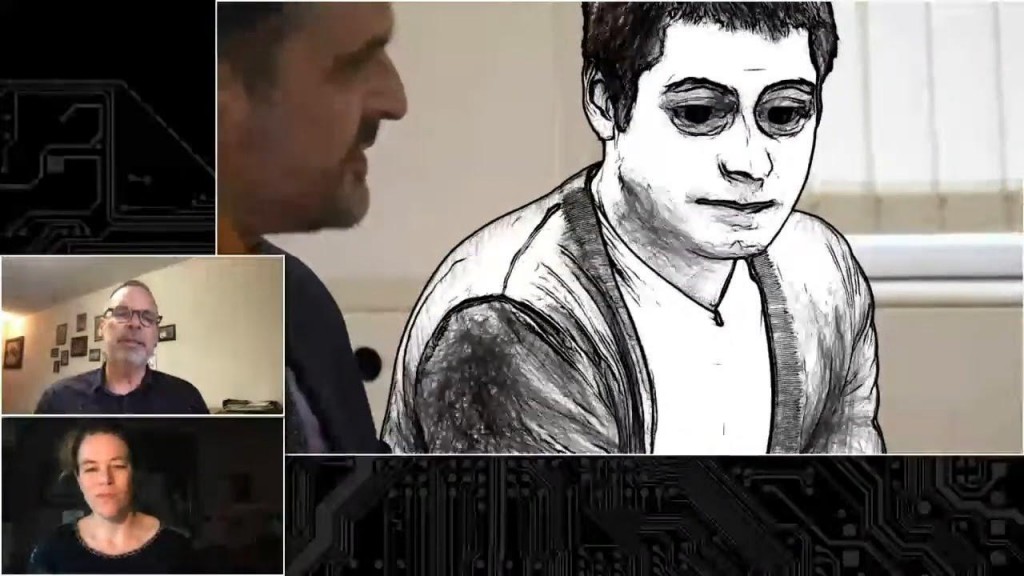Deepfakes: Identity Threat or Identity Protection?
Master student Rebecca Haselhoff is currently doing a research internship at Beeld & Geluid, focusing on deepfake technologies by reflecting on the different ways in which deepfakes can be used and what impacts they can have on society. This blog is the first of a four-part series in which different applications and impacts of deepfake technologies will be explored.
Master student Rebecca Haselhoff is currently doing a research internship at Beeld & Geluid, focusing on deepfake technologies by reflecting on the different ways in which deepfakes can be used and what impacts they can have on society. This blog is the first of a four-part series in which different applications and impacts of deepfake technologies will be explored.

David France, director of Welcome to Chechnya, discussing the rotoscope technique. Photograph: Witness/Youtube
AI-generated videos called “deepfakes” have been circulating online for the past couple of years now. They are becoming increasingly more realistic and the technology to create such videos has become easily accessible. What are the influences of this type of synthetic media on society? And in what ways are deepfakes being used?

Photograph: Bastian Riccardi/Unsplash
Maybe you remember the "face-swapping” trend that could be found all over social media several years ago, especially on Snapchat. This filter seemed to be a massive hit, with people everywhere in the world swapping their faces with those of family and friends. In recent years, though, a new type of advanced machine learning technology has been created that can generate similar face swaps, but much more detailed and realistic than ever before: deepfakes. This specific technology allowed for many more ways to play with your identity in funny and whimsical ways. Ever wanted to become a movie star? Just download a Chinese app called Zao and you can turn yourself into the main protagonist of your favourite films. Or have you always wanted your photographs to move like they do in Harry Potter movies? Just upload some images to MyHeritage and your family portrait will suddenly come to life.
The debate on whether or not deepfakes are dangerous is, therefore, a complicated one. Although they could indeed be used with bad intentions such as identity theft, there are also many cases in which deepfakes might be applied in positive ways. Welcome in Chechnya is a project that exemplifies how there are always two sides to the same coin: not only could deepfakes be used to ‘steal’ people’s faces, they could also be used to protect those same faces. It might, therefore, be useful to raise awareness on deepfakes within society, as well as taking the right cautions when it comes to using deep learning technologies. This might help to prevent deepfakes from causing harm to society and to develop AI technology for positive intentions.
The next blogpost will be discussing deepfakes & mental health: how can deepfakes be used in therapy and how can artificial intelligence support your mental wellness?
Rebecca Haselhoff is an MA student of Media Studies: Digital Cultures at Maastricht University. She’s doing a research internship at Beeld en Geluid, focusing on deepfake technologies and the different ways in which deepfakes can be used and what impacts they can have on society.
Read other blogs of this series:
Newsletter Research
Subscribe to the newsletter Research of Sound & Vision and stay informed of all meetings and activities we do to make our collections accessible for research. The newsletter is in Dutch.